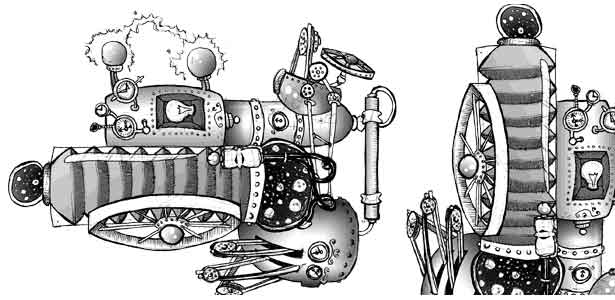by Jenny Gheith
“It’s fascinating that the beats remain the last literary-artistic ‘school’ to have drawn (and retain) a public audience beyond professionals — most of which audience misunderstands the work and its aesthetic foundation. But then, that’s the case with most art that reaches a public audience, isn’t it?”
–Barry Silesky, author of John Gardner: Literary Outlaw
There’s nothing better than a good story, especially when it surrounds the creation of a masterpiece. In the visual arts, this is perhaps easier to witness than in literature. We have drawings, sketchbooks and x-ray vision to expose the artist at work. It’s that creative spark, the moment of divine inspiration that we want to hear about and better yet see.
As years go on, the tales grow taller and that moment grows to epic proportions. One such story surrounds the writing of Jack Kerouac’s On the Road. During three weeks in 1951 (April 2 until April 22 to be exact), Kerouac wrote the definitive novel of the Beat Generation. High on coffee, and some say also on Benzedrine, Kerouac sat down at an old typewriter at his friend Bill Cannastra’s apartment to relay stories from his two years spent trekking across the country with Neal Cassady. What makes the story worth telling is that he typed on what is now known as “the scroll” — 120 feet of pure spontaneous prose. So as not to interrupt his flow, Kerouac taped ten 12-foot lengths of tracing paper that he found around Bill’s apartment and typed single-spaced without stopping to indent. In a letter to Cassady he explains that he “went fast because road is fast … just rolled it on the floor and it looks like a road.”
But that’s not where the story ends. No publishing house wanted Kerouac’s novel, which dealt with the seamier side of America. It took six years for On the Road to be published, but then just moments for Kerouac to be propelled to the fore of the literary world and the thriving beatnik subculture. It wasn’t just what Kerouac wrote that garnered attention, but how he wrote it (Kerouac seemingly knew this when he displayed the scroll at a press conference at the time of its publication).
After Kerouac’s death in 1969, the manuscript changed hands several times and supposedly spent some time in a dorm room closet before it wound up at the New York Public Library. In 2001, there was major public outcry when it was sold at Christie’s for $2.43 million dollars to the owner of the Indianapolis Colts, Jim Irsay (at the time of Kerouac’s death his estate was only valued at $100). Scholars protested that this piece of literary history should not be in the hands of a private collection, but Irsay did not want the scroll to collect dust in a vault.
Currently, the scroll is on a four-year, 13-stop national tour that will end in New York in 2007. Just recently I drove out to the University of Iowa to experience it for myself. Yellowed from age, the scroll was stretched out in its entirety for the first time ever for a viewing audience, and there it sat in an empty, dimly lit room, 120 feet long, encased in a stainless steel and glass vitrine. All of the original names were there and amazingly, even though Kerouac made a mistake in the first sentence (“I first met met Neal Cassady”), he kept on typing. The bold single-spaced type was offset by the lightly penciled-in edits and scratched out sections. The end was missing, which, as the story goes, was supposedly chewed by a dog. Here was the record of Kerouac’s creativity, the document that would make its mark on American literature and perhaps even more compelling, the man, bare and exposed, sensitively open and honest, mistakes and all.
But I knew the myth that surrounded the writing of On the Road wasn’t exactly accurate. This work didn’t just come to him during those inspired 21 days; this was his fresh attempt at a novel he had been working on for the two years since his trip. Also, how much influence did John Clellon Holme’s manuscript of Go (which retold the story of the “people and events” in his life) have on Kerouac, since he read it just weeks before William S. Burrough’s Junky (known at that time as Junk)? And, of course, this was not the final draft since Kerouac spent the next month revising and retyping. But while I stood there, I fell under the spell of the romantic version, the myth surrounding its creation. There it was, the relic of the Beat Generation perfectly displayed in its road-like reliquary.
May 2005






